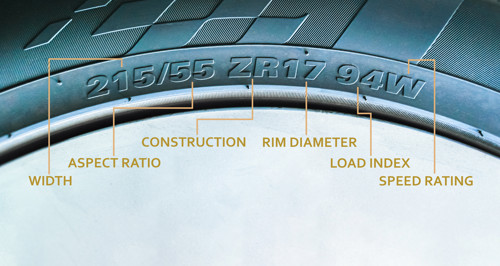If you’ve ever looked at the side of your car’s tyres and wondered what all the numbers and letters mean, you’re not alone. In fact, many people are unaware of the information provided by the tyre sidewall.
So, what does all this information mean for you and your car? Ensuring that you have the correct tyres for your car and wheels is essential and changing any of these ratios or sizes can have a significant impact on your car's handling and ride quality, both for better or for worse. The information on the tyre sidewall helps you choose the best tyre for your vehicle, depending on your driving needs and the car's specifications.
Below, we break down what each set of numbers and letters mean and how they impact your car’s performance.
Section width (215)
This number indicates the width of the tyre in millimeters, measured from the maximum width of the midpoint of the tyre’s sidewall to the same point on the opposite sidewall. It is not just the width of the tread, but rather the maximum overall width of the tyre when viewed from above.
Aspect ratio (55)
This number represents the height of the tire's sidewall expressed as a percentage of the tyre's section width. In this case, it means 55% of 215mm, or 118.25mm. Low profile tyres, which have a smaller aspect ratio, offer better control and handling through corners but provide a harder ride due to less sidewall flex.
Construction (ZR)
This letter indicates the style of construction of the tire carcass. "R" is the most common and stands for radial, while "ZR" indicates that it is still a radial tyre, but capable of high-speed operation. Other codes include "B" for bias belt, "D" for diagonal, while if the tyre has no construction code, then it is a cross-ply.
Rim diameter (17)
This number represents the size of the wheel the tyre will be fitted to and is measured in inches from the wheel flange where the tire is seated to the same point on the opposite side.
Load index (94)
This number indicates the maximum weight the tyre can carry when travelling at its maximum speed rating, but not exceeding 210km/h. "94" means 670kg per tyre, which is more than enough to hold up most passenger cars.
Speed rating (W)
This letter represents the tyre's maximum speed capability when operating at its maximum load-carrying capacity. In this case, the "W" speed rating means it can safely operate at a maximum speed of 270km/h, which is unlikely to be reached by most passenger vehicles.




